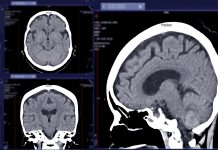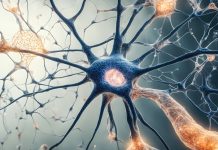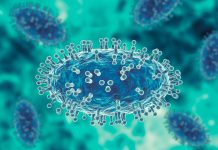There are about 36 million individuals in the EU living with a rare disease. Sandra Gallina, Director General at DG Sante, explains how the European Commission is addressing the needs of this community
Rare diseases only affect a small percentage of the population, but collectively, they impact millions of people. In fact, up to 36 million EU citizens are suffering from a rare disease today. These patients often face frustration, discomfort, and fear as they struggle to find out what is affecting them or how to deal with it. When it comes to tackling rare diseases, the added value of EU action is undisputable, given the scarce national resources available and the insufficient expertise in this area, as it helps to maximise Member States’ efforts.
In our European Health Union, no one should be left behind. We work to protect and promote the health of every citizen, including those living with a rare disease. We want to help these patients get fast and accurate diagnoses, as well as the treatment and care that they need when available. We also want to accelerate the work on cures for the many rare diseases currently having no medical solution. That is why the Commission has given such high priority to the work on rare diseases for more than 30 years and has entrenched this in the framework of our Health Union. In fact, rare diseases were identified for the first time as a priority field for public health action in the EU in 1993, in the Commission Communication of 24 November on the framework for action in the field of public health.
Research and development are clearly key to improving the outlook for rare disease patients, given the large knowledge gaps that exist today, considering that currently, 95% of rare diseases have no cures. The European Health Data Space will make it easier to exchange and access health data at the EU level, including for research and innovation activities, thereby improving scientific insights into rare diseases. We are also providing financial support for rare diseases through the Horizon Europe programme, including €150mn to develop diagnostics and treatments through a new European Partnership on Rare Diseases to be launched in September this year. This type of investment can be literally lifesaving for patients in the years ahead.
Q. How has the European Reference Networks impacted the rare disease landscape in the EU?
A major EU success story has been the European Reference Networks (ERNs), which was set up to connect healthcare providers specialised in rare diseases across the EU and Norway. At the heart of the work of the ERNs lies the goal of supporting patients with rare diseases, as well as their families.
No country alone has the knowledge and capacity to treat all rare and complex conditions. Thanks to the ERNs, patients across the EU have access to the best expertise available. Through these networks, the experts reach the patient without the patient having to travel to experts who may be located far away. The European Union connects the dots, maximising synergies between Member States and encouraging the sharing of knowledge and resources.
All ERNs see the structural participation of rare disease patient groups, which provide essential information on patients’ needs and help improve disease knowledge and management. Today, over 1600 specialised clinical centres located in 382 hospitals in the EU and Norway are involved in the ERNs, and the Commission is investing heavily to support and reinforce their work.
The Commission is currently providing an unprecedented €77mn in direct grants to the ERNs for the 2023-2027 period to support each of the networks in several core areas, including disseminating results, enlarging registries, and organising training sessions. I am proud to say that our ERNs have become a model to follow worldwide. They will remain a powerful instrument in our work on rare diseases in the years ahead.
Q. How can the long-term sustainability of the European Reference Networks be achieved?
Looking ahead, it is crucial that this momentum is sustained. The fast-paced advances in science and technology give cause for hope to those suffering from rare diseases. The Commission will do everything it can to continue to support improvements in this field so that we can turn that hope into reality.
Concretely, some €18.75mn of funding is being used to better integrate ERNs into national health systems and pave the way for their future sustainability through a three-year Joint Action involving 27 Member States, Norway, and Ukraine. In addition, the Joint Action brings together all key stakeholders in the field of the rare disease reference networks, such as policymakers, the ERNs themselves, hospital managers and patient organisations. The work will entail, for example, developing national patient pathways linked to ERNs, national reference networks mirroring and complementing the ERNs, and structures for undiagnosed patients. The outcomes of the Joint Action will be pivotal in order to determine the most appropriate means for ensuring the long-term sustainability of the ERNs. It is, therefore, crucial that the Joint Action is supported by all key stakeholders and that its results are closely followed up to ensure the future success of the ERNs.
Q. Funds dedicated to rare disease research have increased over the last few decades; what barriers remain in terms of advancing scientific knowledge and understanding of rare diseases?
The EU has made major investments during the last two decades to support research and innovation (R&I) on rare diseases by making available more than €4.4bn to hundreds of single and multi-partner projects through the European framework programmes for R&I. More than 80% of those funds support cross-border and interdisciplinary research in almost all medical fields of rare diseases. These projects have already contributed to the understanding of the underlying causes of these diseases and the development of diagnostics and treatments.
95% of the known rare diseases still lack an approved treatment and around 50% lack a confirmed molecular diagnosis. These represent enormous unmet medical needs. Rare diseases present unique research challenges. The small number of people affected by a rare disease, each with its specificities combined with the frequent lack of understanding about the cause and course of the diseases, leads to a scarcity and a fragmentation of knowledge and expertise.
That is why European and international collaboration is indispensable in improving diagnosis and developing new treatments. Horizon Europe (2021-2027), the current EU Framework Programme for Research and Innovation, continues to support research and innovation actions on rare diseases. Moreover, the Commission is committed to working with public research funders in the EU and beyond. Under Horizon Europe, as stated above, a new co-funded European Partnership (EU funding up to €150mn) is due to be launched by the end of 2024, aiming to improve the health of people living with RDs through better prevention, diagnosis and treatments and an effective R&I ecosystem.








